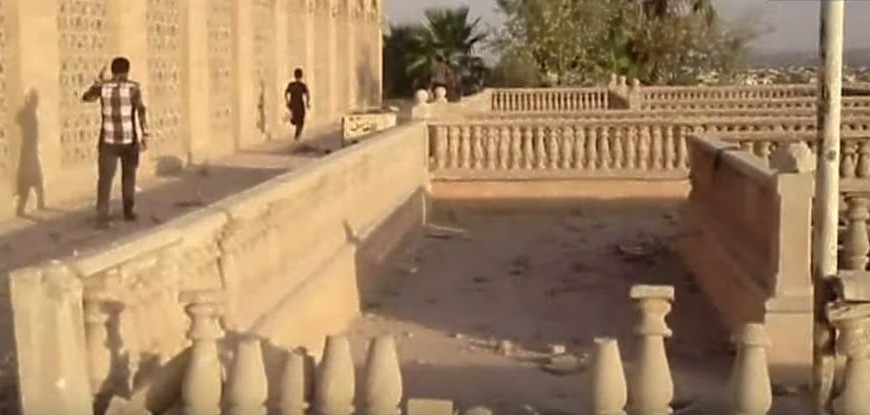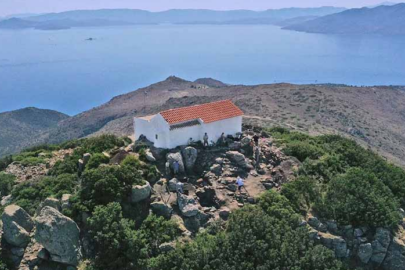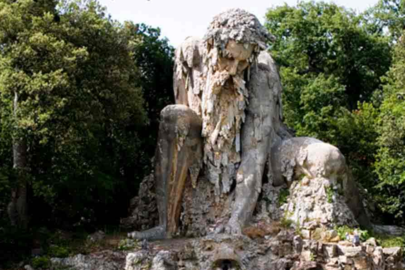In some rare good news for locals of the war-torn city of Mosul in northern Iraq, a 2,600-year-old Assyrian palace has been discovered underneath a shrine that was demolished by ISIS back in 2014, complete with untouched artefacts and marble sculptures.
Iraqi officials discovered the underground palace after state troops regained control of East Mosul in late January, and now local archaeologists say it’s a race against time to save the ancient treasures before the whole thing collapses in on itself.
“We fear it could all collapse at any time,” archaeologist Layla Salih, who is in charge of antiquities for Nineveh province, told The Sun. “There are cave-ins in the tunnels every day.”
Islamic State (ISIS) militants have made a habit of deliberately destroying major archaeological sites in territories they’ve occupied in recent years, proclaiming objects from the Assyrian and Greek period as “idolatry”.
“They want their own history,” Iraqi archaeologist Lamia al-Gaylani told Bloomberg. “Especially in a city like Mosul where the people are very proud of their history, I think (ISIS) did this as a form of revenge.”
Late last year, they reportedly bulldozed two of the world’s most ancient cities in northern Iraq, and just last month, officials confirmed that they’d flattened the iconic amphitheatre of the ancient city of Palmyra in Syria – one of the Middle East’s most famous Roman sites.
Back in July 2014, ISIS blew up a stunning 12th-century mosque called the Nabi Yunus shrine, which was believed to hold the tomb of Jonah – the Biblical prophet known as Yunas in the Qur’an.
Global outrage ensued, but it wasn’t until Iraqi troops wrangled control of the region back from the jihadists early this year that the extent of the damage was truly felt.
“[It is] far more damaged than we expected,” Culture Minister Salim Khalaf told the press last month.
Since regaining the territory, local officials have been worried about the ruined shrine collapsing, because they were aware of ISIS troops digging tunnels underneath it, both to hide from attacks and to hunt for artefacts, says Khalaf.
What they didn’t know until local archaeologists were sent down there was that those tunnels had exposed a previously unknown temple and possible palace entrance, dating back to the Assyrian period some 2,600 years ago.
While much of the labyrinthine structure has been looted by the ISIS militants to sell on the black market, there’s still a lot down there to discover, with carved stone reliefs, inscriptions, and sculptures that appear to represent priests and religious ceremonies.
More than 100 pieces of pottery were left behind by ISIS, accordingly to Salih, and reports of stunning white marble sculptures of winged bulls are one of the most exciting finds so far, along with elaborate bas-reliefs on the tunnel walls with inscriptions in cuneiform alphabet and sculptures of women’s faces.
“These finds are very important,” Salih told Tom Michael at The Sun. “They teach us more about Assyrian art. In general, their sculptures show people in profile, whereas here we have women face on.”
Check out some of the images here.
Salih told the press they’ve discovered a marble cuneiform inscription of King Esarhaddon, which they’ve dated to around 672 BCE. King Esarhaddon is thought to have ruled from 681 to 669 BC.
“The reliefs are unique, they have features which we have not seen anywhere else – they are not at all like the well-known Assyrian hunting and banqueting scenes such as we have in the museum,” Sebastien Rey, lead archaeologist at the Iraq Emergency Heritage Management Programme at the British Museum, told The Guardian.
“We also have reports – but as yet no photographs – that they have found two lamassu, the famous winged bull figures, which would suggest that they may have been flanking the entrance to a palace, with some form of temple as an annex.”
It’s now all hands on deck, as archaeologists and local officials race to document and save whatever artefacts they can while the underground structure still holds.
While it’s certainly an encouraging find for the Mosul locals, who have lost so much of their ancient heritage to the war, the preserving the new find will not be easy, and Iraqi archaeologists are hoping colleagues from around the world will lend a hand.
“The archaeologists are incredibly brave. They are working in extreme danger, with the mud brick in danger of collapse at any time,” Rey told The Guardian.
“When it is safe to mount a full rescue excavation this will be a major operation, needing a great deal of resources which will certainly mean international support.”































